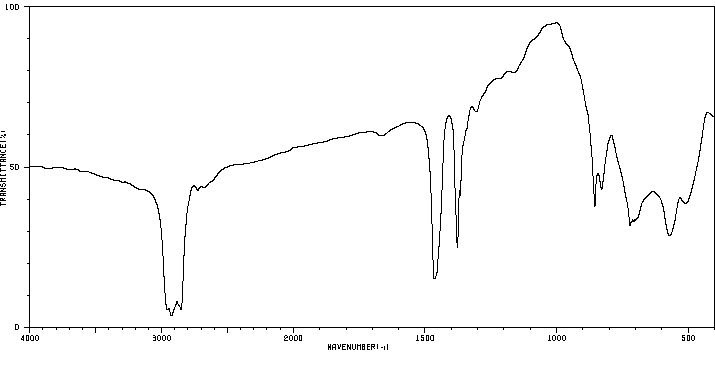代谢
这项研究调查了家兔在摄入亚砷酸钠和水溶性二巯基化合物后尿液中亚砷酸钠的代谢物。给家兔皮下注射NaAsO2(按体重1毫克/千克砷)一小时后,分别肌肉注射生理盐水、2,3-二巯基-1-丙磺酸、间-二巯基丁二酸或N-(2,3-二巯基丙基)酞酰亚胺酸,剂量为0.2毫摩尔/千克。通过组合阴离子-阳离子交换色谱法从处理过的家兔尿液中分离亚砷酸钠代谢物。柱层析馏分经酸消化后,通过直接氢化物火焰原子吸收光谱法分析砷含量。在只给予亚砷酸钠的家兔0到24小时尿液中发现的无机砷、甲基砷酸盐和二甲砷酸盐的相对量与口服亚砷酸钠的人体报告非常接近。这一发现表明家兔对亚砷酸钠的生物转化方式与人类非常相似。在给予二巯基化合物后,0到24小时内尿液中总砷的排泄量有所提高,但在0到48小时内的总砷排泄量不受影响。这一结果表明这些二巯基化合物的作用发生在治疗后的早期。此外,这些二巯基化合物对0到24小时内尿液中砷代谢物排泄量的影响各不相同。2,3-二巯基-1-丙磺酸、间-二巯基丁二酸或2,3-二巯基-1-丙磺酸增加了砷酸盐的排泄但减少了二甲砷酸盐的排泄。2,3-二巯基-1-丙磺酸或N-(2,3-二巯基丙基)酞酰亚胺酸处理增加了甲基砷酸盐的排泄,但间-二巯基丁二酸没有影响。在2,3-二巯基-1-丙磺酸或间-二巯基丁二酸治疗后,砷酸盐的排泄增加,但N-(2,3-二巯基丙基)酞酰亚胺酸处理没有影响。这些结果提示,除了增加砷的排泄外,这些二巯基化合物还影响亚砷酸钠向毒性较小的物种的生物转化。对尿液中砷代谢物排泄的不同影响表明,这些二巯基金属结合剂的作用机制不仅仅是简单螯合无机砷。
The urinary metabolites of sodium arsenite have been investigated in rabbits given sodium arsenite and water-soluble dimercaptans. Rabbits injected sc with NaAsO2 (1 mg arsenic/kg) were given im 1 hr later, either saline, 2,3-dimercapto-1-propanesulfonic acid, mesodimercaptosuccinic acid, or N-(2,3-dimercaptopropyl)phthalamidic acid at 0.2 mmol/kg. Arsenic metabolites in urine collected from treated rabbits were isolated by combined anion-cation-exchange chromatography. Column fractions were acid-digested and analyzed for arsenic by direct hydride-flame atomic absorption spectrophotometry. The relative amounts of inorganic arsenic, methylarsonate, and dimethylarsinate found in 0 to 24 hr urine of rabbits given only sodium arsenite agreed closely with those reported for human subjects given arsenite po. This finding suggests that the rabbit biotransforms arsenite in a manner very similar to humans. The urinary excretion of total arsenic between 0 and 24 hr was elevated after dimercaptan administration. but urinary excretion of total arsenic between 0 and 48 hr was unaffected. This result indicates that the action of these dimercaptans occurs early after treatment. In addition, the dimercaptans influenced differently the amounts of the arsenic metabolites excreted in the urine between 0 and 24 hr. 2,3-Dimercapto-1-propanesulfonic acid, mesodimercaptosuccinic acid, or 2,3-dimercapto-1-propanesulfonic acid increased arsenite excretion but decreased dimethylarsinate excretion. 2,3-dimercapto-1-propanesulfonic acid or N-(2,3-dimercaptopropyl)phthalamidic acid treatment increased methylarsonate excretion but mesodimercaptosuccinic acid did not. Arsenate excretion increased after 2,3-dimercapto-1-propanesulfonic acid or mesodimercaptosuccinic acid, treatment but was not affected by N-(2,3-dimercaptopropyl)phthalamidic acid treatment. These results suggest that the dimercaptans, in addition to increasing arsenic excretion, also influence the biotransformation of arsenite to less toxic species. The different effects on the urinary excretion of arsenic metabolites suggest that these dimercaptan metal binding agents have mechanisms of action in addition to simple chelation of inorganic arsenic.
来源:Hazardous Substances Data Bank (HSDB)







